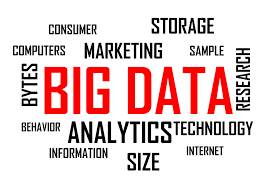5 Ways in Which Retailers Can Utilize Big Data and Digital Signage for Success
Today, most successful retailers are using big data and digital signage to improve their operational efficiency and customer experience while boosting their sales. A huge volume of data can be generated on the retail industry every second through both traditional sources and technology driven sources. Retailers and restaurant owners are using advanced analytics to gain relevant insights and even make concrete real-time decisions that are beneficial to both the customer and the business.
• Detection and prevention of fraud
By leveraging on the rich data environment of the retailer, exact areas of fraud exposure can be recognized. Retailers can analyze information from every day sales transaction and other activates like warehouse inventory, sales forecasts, accounts payable, employee shift records, and much more. Business owners can easily determine any areas of fraudulent activities and assist in protecting the business.
• Inventory forecasting
Big data has made it easy to forecast business inventory. In the past, having limited information points meant that business owners had a restricted field of vision. Companies usually depended on variables such as season or month to get inventory forecasts. Nowadays, big data utilizes variables such as trending topics, weather, promotional outcomes, and many more. By using predictive analytics, business owns can spend more time selling instead of holding stale inventory.
• Smart merchandising
For most retailers, moving inventory is usually one of their top priority. Big data can help to move your inventory by adding intelligence to the shopping experience. Restaurants can use big data and TV menu board to move their inventory by advertising items that suit the needs of different clients at specific times. They can also advertise only the items that are in large stock in the kitchen to avoid spoilage and wastage.
• Fuzzy matching
Most consumer usually have an idea of what they really want. When chopping online or on retail stores, consumers have the ability to choose their preferences and they always find several options. Some clients may think that they really know what they want, but they have not been exposed to all the available options. On the other hand, the retailers may not have the exact item that the consumer needs, but may have other options that would please them. Fuzzy matching utilizes algorithmic data to determine whether there is a link between what the consumer wants and what the retailer has. This can provide consumers with close matches and help retailers to offer what they have.
• Offer relevant mobile web experiences for in-house shoppers
Retailers can now asses where a consumer is in the store and provide relevant content based on their initial location. This content will change depending on what the consumer selects on the mobile web portal and this helps to create a customized, but anonymous shopping experience. Retailers can use big data to embed contextually appropriate offers into the shopping experience. This approach can help to engage the consumers with the retailer’s brand for a long period both on the phone and keeping the customers in your store longer.
• Monitoring stock levels and shrinks in the future
Big data helps retailers to not only enhance the customer experience, but also boost employee productivity and operational efficiency by automating different store routines. For instance, business owners can use information from RFID tags, video, or shelf sensors to monitor their stock levels on the store shelves and also send alerts for staffs to restock whenever necessary. In addition, these sensors can also alert the employees on suspected theft. This helps to enhance store productivity and prevents lost revenue and help in reducing shrink.
• Use sensor data to optimize checkout
Retailers can leverage information from a wide variety of sensors including store cameras, shopping cart tags, and parking lot sensors. By applying smart analytics to this information, retailers can predict checkout wait times and tactically alert the store service managers whenever more registers need to be opened or automatically open the registers before the clients get there. Providing these recommendations and near-time insights to departmental managers will ensure the most sustainable improvements when analytics and human touch are used together.
• Consumer gamification
Gamification is a successful tool that can be used for increasing loyalty and engagement from consumers. Gamification has been made virtually limitless by big data and businesses should take advantage of it to take their businesses to the next level. Gamification through loyalty rewards has increased over the past several years. Loyal customers are now earning virtual or physical rewards for desirable activities. Referral programs are offering incentives for consumers to be the unpaid salesforce for brands that they champion.
Big data is now infiltrating on almost all areas of the retail industry and helps to boost the effectiveness of almost all aspects of the retail operations. More retailers are now adopting the enterprise big data solution for gaining customer loyalty, improving the current process, gaining a competitive edge, increasing sales, and reducing fraud. Incorporating big data into your digital signage systems will help you to enhance your customer experience and boost your sales for many years to come.
Author Bio
Karen is a Business Tech Analyst. She is very responsible towards her job. She loves to share her knowledge and experience with her friends and colleagues.


